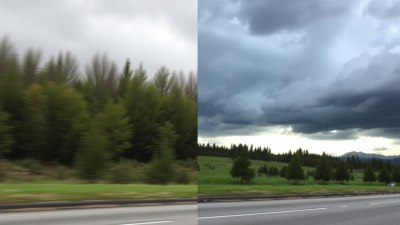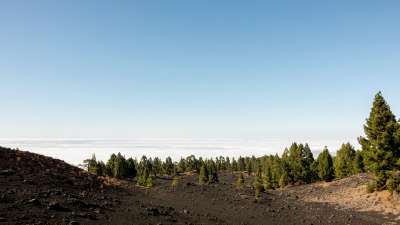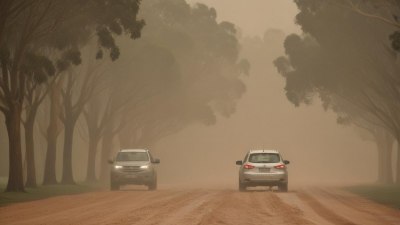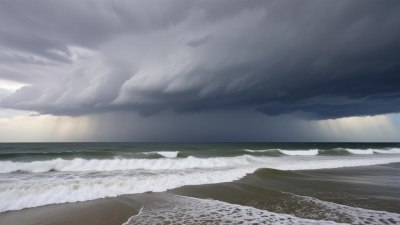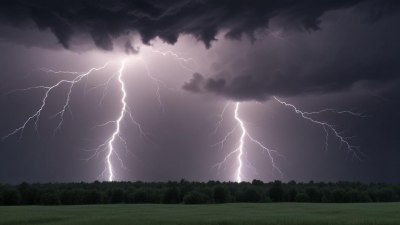How Earth’s Rotation Shapes Every Storm You See
Explore how Earth's rotation influences storm patterns, intensities, and weather phenomena across the globe.
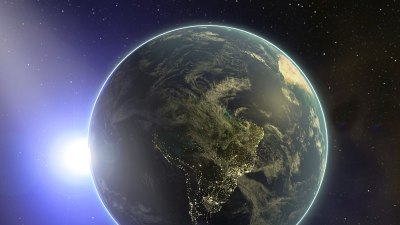
When we observe storms, whether they are hurricanes, tornadoes, or thunderstorms, we notice their unique characteristics and behaviors. But have you ever considered how Earth's rotation shapes these violent weather events? The rotation of the Earth plays a crucial role in the formation, movement, and intensity of storms. Let’s delve into the science behind this fascinating phenomenon.
The Basics of Earth's Rotation
The Earth rotates on its axis every 24 hours, completing one full rotation that results in day and night. This rotation occurs from west to east, causing the sun to rise in the east and set in the west. The speed of this rotation varies depending on your location; it’s fastest at the Equator and slows as you approach the poles. The rotation has far-reaching effects beyond the simple day-night cycle; it influences atmospheric circulation patterns that are vital for weather formation.
Coriolis Effect Explained
One of the most significant impacts of Earth's rotation on weather patterns is the Coriolis effect. The Coriolis effect refers to the apparent deflection of moving objects when viewed in a rotating reference frame. In the context of Earth's atmosphere, this means that winds and ocean currents do not travel in straight lines, but rather curve due to the rotation of the planet.
The Coriolis effect causes winds to twist and creates the familiar cyclonic spiral in storm systems. In the Northern Hemisphere, winds rotate counterclockwise around low-pressure systems, while in the Southern Hemisphere, they rotate clockwise. This twisting motion is essential for storm formation; without the Coriolis effect, storms would not organize into the rotating systems we observe today.
How Storms Form
Storms are formed from a combination of heat, moisture, and atmospheric instability. Warm air rises, creating a low-pressure area at the surface. As air moves into this low-pressure zone, it begins to cool and condense, forming clouds and precipitation. The Coriolis effect influences the trajectory of the winds feeding into the low-pressure area, helping to create the organized structure of cyclones.
For instance, hurricanes typically form over warm ocean waters where conditions are conducive to development—warm, moist air produces instability. The Coriolis effect helps to organize these storms, making them more coherent and allowing for the rotation that characterizes hurricanes. Without this rotation, storms would likely dissipate before they could intensify.
Wind Patterns and Storm Tracks
Global wind patterns are also affected by the rotation of the Earth. The planet’s rotation leads to the establishment of large-scale wind belts, such as the trade winds, westerlies, and polar easterlies. These wind patterns influence the paths that storms take as they travel across the globe.
For example, hurricanes typically form in tropical regions and are steered by the trade winds. Once they gain strength, they may travel west into the Caribbean or turn north along the U.S. coastline, influenced by the westerlies. Understanding these wind patterns is critical for meteorologists when predicting storm paths and potential impacts on land.
The Role of Ocean Currents
Ocean currents, which are also affected by Earth’s rotation, play a significant role in storm formation and intensity. Currents transport warm water from the equator toward the poles and cold water from the poles toward the equator, helping to regulate global temperatures. The interaction between ocean currents and atmospheric conditions can amplify or diminish storm systems.
For example, El Niño and La Niña events, which are caused by variations in ocean temperatures, can significantly influence the strength and frequency of storms. During an El Niño, warmer sea surface temperatures can lead to more intense hurricanes, while La Niña may suppress storm activity in some regions. Thus, the interplay between Earth's rotation, ocean currents, and climate systems is vital for understanding storm behavior.
Storm Biology: Cyclones, Tornadoes, and More
Cyclones, tornadoes, and other storm systems have specific formation criteria that are influenced by Earth's rotation. Cyclones, such as hurricanes and typhoons, are large systems of rotating winds that originate over warm waters. Tornadoes, on the other hand, can form more locally when warm, moist air collides with cold, dry air. The rotation of the Earth presents conditions that stabilize these warm air masses at altitude, allowing tornadic rotation.
In the case of tornadoes, wind shear—a change in wind speed and direction with altitude—contributes to their formation. The Coriolis effect comes into play as it helps to organize these swirling airstreams, often leading to the powerful, rotating updrafts that characterize tornadoes.
Climate Change and Storm Behavior
In recent years, scientists have been intensively studying how climate change alters Earth’s weather patterns and storm behavior. While the Coriolis effect itself remains intact, the warming of the planet impacts storm development, longevity, and intensity.
Warmer ocean temperatures enable hurricanes to gather more energy, potentially leading to stronger storms. The increase in atmospheric moisture also means that rainfall rates during storms may increase, leading to devastating floods. Furthermore, the patterns of storm tracks may shift, as changing weather systems could redirect where storms typically form and travel.
Preparing for Storms
Understanding how Earth’s rotation shapes every storm is crucial for improving forecast accuracy and preparing for severe weather events. Meteorologists utilize advanced satellite technology and computer models to analyze data and predict storm trajectories based on current conditions influenced by Earth’s rotation.
Governments and organizations worldwide emphasize preparedness measures, such as the development of early warning systems, public education about storm safety, and improving infrastructure to withstand extreme weather events. Communities that understand the science behind storms are better equipped to respond effectively when severe weather strikes.
The intricate relationship between Earth's rotation and storm behavior is a testament to the complexity of our planet's weather systems. As we continue to study the dynamics of storms, it becomes increasingly clear that the rotation of the Earth influences both the formation and intensity of these meteorological phenomena. While we cannot control the weather, understanding the science behind storms can help us prepare for their inevitable occurrence and reduce the risks associated with these powerful natural events.

